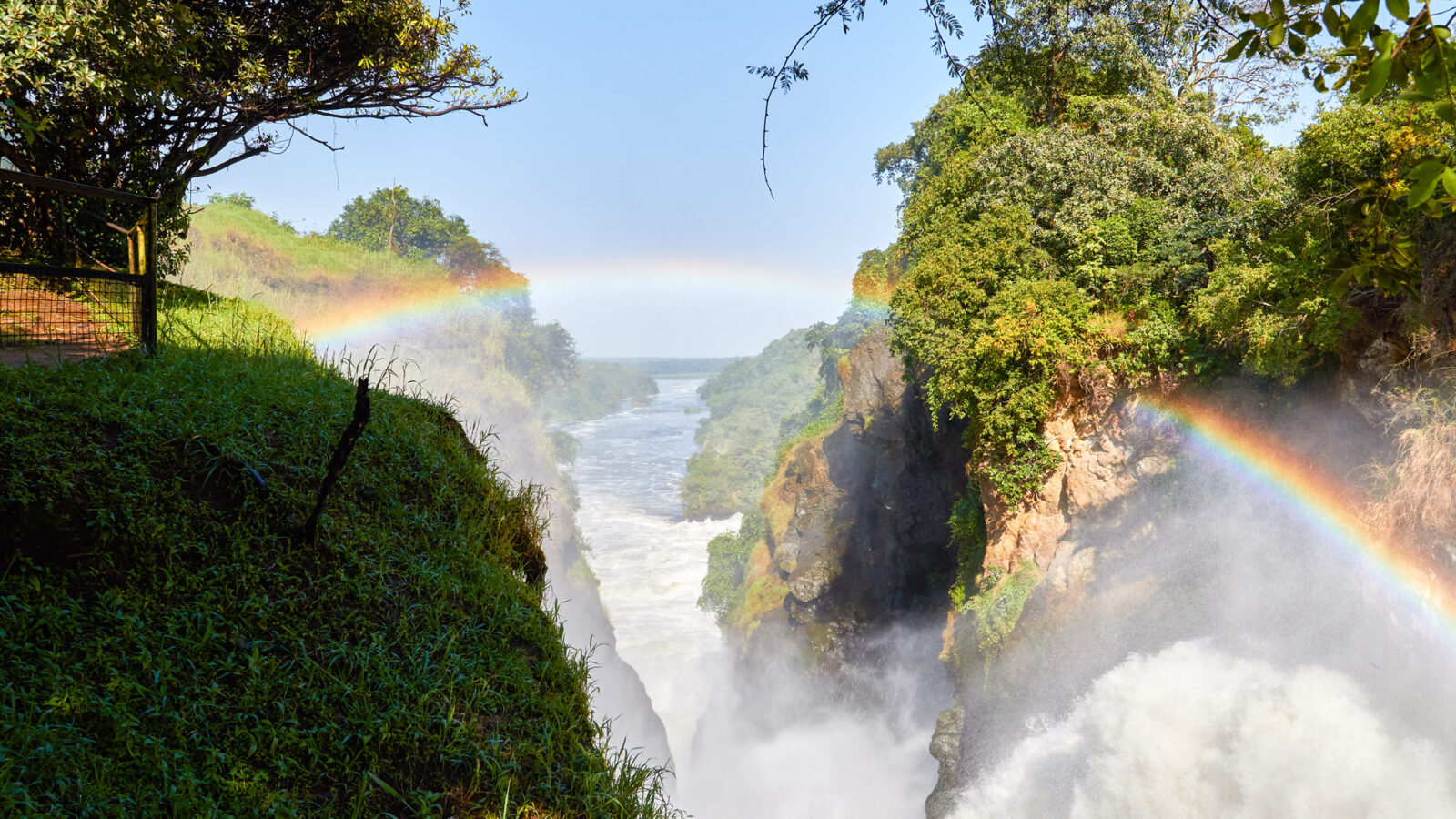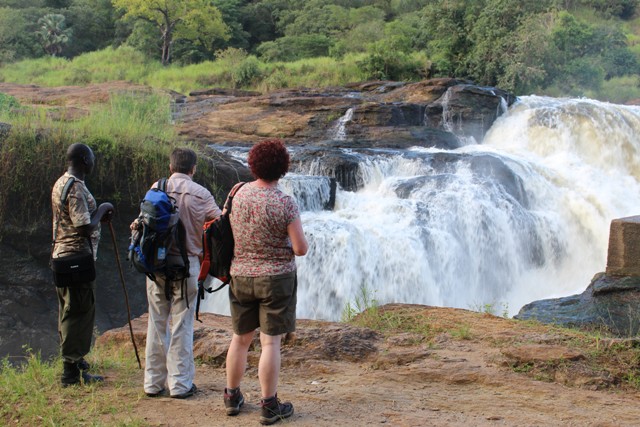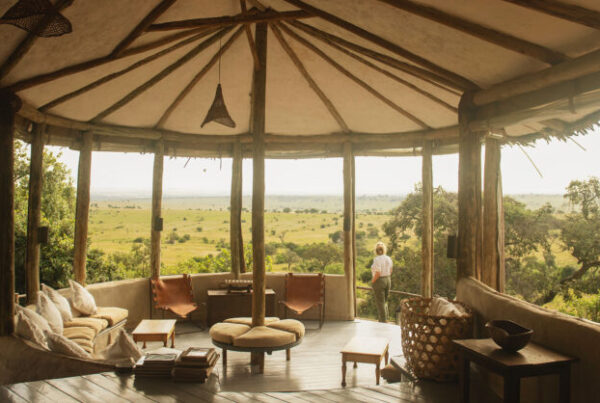The Mighty Murchison Falls: Uganda’s Most Powerful Waterfall
Where the Nile Roars with Untamed Power
In the northwestern heart of Uganda lies a spectacle of nature so commanding and so unforgettable that it has been called one of the greatest natural wonders of Africa. Known as Murchison Falls, this waterfall is celebrated not only as the most powerful cascade on the continent but also as a place where the Victoria Nile demonstrates its unrelenting force. Here, the river narrows from a broad channel into a gorge scarcely seven meters wide, plunging with a thunderous roar into a churning cauldron below. The result is a breathtaking collision of sound, mist, and raw energy that has captivated explorers, scientists, and travelers for generations.
Murchison Falls is more than a waterfall; it is a symbol of the untamed wilderness of Uganda, a centerpiece of its largest national park, and a natural phenomenon that defines the character of the Nile itself. Surrounded by rolling savannahs, riverine forests, and rich biodiversity, it creates an experience that blends dramatic scenery with abundant wildlife. For those who set foot in this park, the memory of the falls becomes inseparable from the memory of Africa itself.
This guide unravels the history, geology, wildlife, cultural heritage, and travel opportunities surrounding Murchison Falls, offering an immersive journey into the soul of Uganda’s most powerful natural wonder.
The Historical Significance of Murchison Falls
The story of Murchison Falls stretches back through centuries of discovery and legend. Long before foreign explorers marveled at the power of the Nile’s narrowest passage, the falls were revered by local communities. The people who lived near the river viewed it not only as a source of life but also as a place of mystical strength, where ancestral spirits were believed to reside in the mist and thunder.
In the nineteenth century, during the age of exploration, the falls entered global awareness through the travels of Sir Samuel Baker. It was Baker who named the falls after Sir Roderick Murchison, a geologist and president of the Royal Geographical Society. His writings described the extraordinary power of the cascade, ensuring that Murchison Falls became a landmark on the map of Africa’s natural wonders.
In the years that followed, the area gained prominence as a conservation zone, eventually being designated as Murchison Falls National Park in 1952. Though the park has faced challenges such as poaching and political instability, it has endured as Uganda’s oldest and largest protected reserve, with the falls remaining its defining centerpiece.
The Geology Behind the Power
The unique geological features of Murchison Falls contribute to its awe-inspiring spectacle. The Nile, flowing from Lake Victoria through Lake Kyoga, reaches this point after traversing hundreds of kilometers. At Murchison, the river, swollen with immense volume, is forced through a gorge only seven meters wide, creating a pressure so immense that the water explodes downward with a force unmatched anywhere in the world.
The fall itself drops around forty-three meters, yet it is not the height that makes it extraordinary but rather the sheer power compressed into such a narrow space. Millions of liters surge through the gorge each second, producing a continuous thunder that reverberates across the surrounding cliffs and valleys. The mist that rises forms rainbows when touched by sunlight, adding a magical aura to the drama of water and rock.
This combination of narrow gorge, dramatic plunge, and immense river volume distinguishes Murchison Falls from other waterfalls of the world, placing it in a class of its own.
The Falls as the Heart of the National Park
Murchison Falls is not isolated; it lies at the core of a much larger ecological masterpiece. The falls bisect the Murchison Falls National Park, a vast expanse of over 3,800 square kilometers. The Nile, after crashing through the gorge, continues its journey towards Lake Albert, creating a riverine ecosystem that supports some of Africa’s most iconic wildlife.
The northern banks of the park are dominated by savannah grasslands, home to elephants, giraffes, buffalo, and predators such as lions and leopards. The southern region is defined by woodlands and the Budongo Forest, which shelters primates including chimpanzees and colobus monkeys. Together, these contrasting habitats create a living mosaic of landscapes and species.
The falls, therefore, serve as both a geographical centerpiece and a symbolic heart. They define the rhythm of the ecosystem, provide life to the riverbanks, and attract visitors whose journeys sustain conservation efforts.
Wildlife Encounters Around the Falls
The presence of the Nile and the fertile plains that stretch beyond it make Murchison Falls National Park one of the most wildlife-rich areas in Uganda. Travelers who venture here are rewarded with scenes that embody the very essence of the African wilderness.
Along the riverbanks, hippos wallow in large pods, their grunts echoing across the water, while crocodiles bask on sandy shores, awaiting unsuspecting prey. Elephants are frequently observed drinking or bathing in the shallows, their massive forms silhouetted against the setting sun. The savannah plains beyond reveal giraffes feeding gracefully on acacia trees, buffalo moving in formidable herds, and antelopes grazing in open fields.
Predators add intensity to the experience. Lions patrol the grasslands, sometimes seen stalking kob or lying in wait beneath shaded thickets. Leopards remain more elusive but may be spotted draped elegantly across tree branches. Hyenas, both solitary and in clans, wander through the night, adding their eerie calls to the symphony of the dark.
The avian world is no less spectacular. Over 450 bird species inhabit the park, including the sought-after shoebill stork, an ancient-looking bird whose presence fascinates birdwatchers from across the globe. Kingfishers, bee-eaters, fish eagles, and herons contribute to the diversity, making the falls and their surrounding wetlands a paradise for ornithology.
Experiencing the Falls: From Below and Above
To truly appreciate the might of Murchison Falls, it must be experienced from multiple perspectives. From below, the boat cruise along the Nile offers a journey that builds in anticipation. The river appears serene at first, carrying the traveler past islands, hippos, crocodiles, and waterbirds. As the boat moves upstream, the sound grows louder, and the spray of water becomes visible in the distance. The final view, where the cascade erupts between rocky cliffs, is a scene of overwhelming power and beauty.
From above, the hike to the top of the falls provides an entirely different perspective. The trail winds upwards, accompanied by the thunder of water and the rising mist. At the summit, the sight of the Nile compressing into the narrow gorge before its violent descent is nothing short of breathtaking. Standing at this vantage point, the force of nature can be felt beneath one’s feet, and the immensity of the falls becomes undeniable.
The dual experience—serenity from below and intensity from above—captures the essence of Murchison Falls as both majestic and ferocious.
Cultural Heritage Around the Falls
The landscape surrounding Murchison Falls is not only a sanctuary for wildlife but also a home for people whose traditions and stories are intertwined with the river. Communities such as the Banyoro and Alur have long lived in the region, sustaining themselves through fishing, farming, and cultural practices passed through generations.
Traditional songs and dances celebrate the river as a source of life, while local folklore attributes spiritual significance to the roaring falls. Visitors who engage with these communities gain not only entertainment but also understanding of the delicate relationship between humans and the wilderness. Cultural experiences complement the natural beauty, ensuring that a journey to Murchison Falls becomes more than a safari; it becomes a meeting of worlds.
Conservation Challenges and Successes
The history of Murchison Falls National Park has been marked by both decline and recovery. During the turbulent decades of the twentieth century, poaching and political instability caused severe reductions in populations of elephants, rhinos, and other species. Yet conservation efforts in recent years have achieved remarkable results. Anti-poaching patrols, community engagement, and tourism revenue have all contributed to the revival of wildlife numbers.
Today, elephants roam the savannahs in healthy herds, giraffes have been successfully reintroduced, and rhino conservation initiatives outside the park hold promise for future reintroduction. The resilience of the ecosystem reflects the determination of conservationists and the role of visitors whose presence helps finance protective measures.
Sustainability remains a central theme. The balance between tourism and preservation requires careful management. Travelers who choose responsible operators contribute directly to the safeguarding of Murchison Falls and its surrounding wilderness.
Best Time to Visit Murchison Falls
The experience of Murchison Falls changes with the seasons. The dry months, from December to February and June to September, offer the most favorable conditions for game viewing and river excursions. During these times, wildlife congregates near water sources, and the roads remain more accessible.
The wet seasons, from March to May and October to November, transform the landscape into lush greenery. Birdlife becomes especially vibrant, with migratory species joining the resident populations. Though rain may challenge accessibility, the falls themselves appear even more dramatic, swollen with seasonal waters and producing thunderous displays of power.
Each season offers unique rewards, and the choice of timing depends on whether travelers seek the clarity of the dry season or the vibrancy of the rains.
Accommodation Around the Falls
Visitors to Murchison Falls are presented with a wide range of accommodation options that reflect the diversity of experiences available. Luxury lodges positioned along the Nile provide sweeping views, elegant rooms, and curated safari experiences. Mid-range lodges and tented camps balance comfort with authenticity, while budget campsites immerse travelers directly into the wilderness with the sounds of nature as their nightly companion.
What unites all accommodation choices is the atmosphere of the wild. Nights in the park are filled with the distant roars of lions, the grunts of hippos, and the chorus of insects, creating an environment where every sense is engaged and the presence of wilderness is undeniable.
Murchison Falls in Comparison with Other African Waterfalls
While Africa is home to several iconic waterfalls, including the towering Victoria Falls on the Zambezi and the sprawling Kalambo Falls on the Tanzania-Zambia border, Murchison distinguishes itself not by height or width but by power. No other waterfall channels such an immense volume of water through such a narrow space, making it the most powerful waterfall on the continent.
This uniqueness ensures that Murchison Falls holds a special place in Africa’s natural heritage. It is not only a wonder of Uganda but a wonder of the world, attracting those who seek to witness the raw might of nature.
Planning a Journey to the Mighty Falls
Reaching Murchison Falls is both accessible and rewarding. Located around 300 kilometers from Kampala, the park can be reached by road in five to seven hours, passing through scenic countryside and towns along the way. Domestic flights to airstrips such as Pakuba and Chobe provide quicker access for those with limited time.
Once in the park, ferries across the Nile connect different regions, and guided excursions ensure safe and enriching exploration. Whether by road, air, or river, the journey to the falls becomes a prelude to the grandeur that awaits.
The Eternal Thunder of the Nile
Murchison Falls stands as the most powerful waterfall in Africa, a place where the Nile demonstrates its might in a way that is both terrifying and mesmerizing. It is a natural wonder that defies comparison, blending scenic beauty, wildlife abundance, cultural richness, and historical significance into an unforgettable experience.
The thunder of the falls echoes not only across the cliffs of Uganda but also across the memories of those who stand before it. For travelers seeking to witness the ultimate expression of nature’s force, Murchison Falls offers an encounter that resonates long after departure.
To ensure that such an extraordinary journey is both seamless and deeply rewarding, it is advised that travelers plan their adventure with WildHorn Africa, a tour provider renowned for expertise, commitment to sustainability, and passion for delivering authentic safari experiences. With WildHorn Africa, the journey to Murchison Falls transforms into more than a trip; it becomes a story of connection with the raw and mighty heart of Uganda.





 WildHorn Africa – Authentic and unforgettable tours across Africa, guided by local experts who know the land, wildlife, and culture best.
WildHorn Africa – Authentic and unforgettable tours across Africa, guided by local experts who know the land, wildlife, and culture best.


